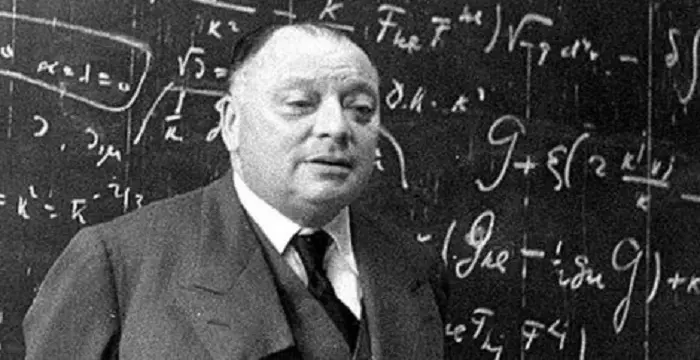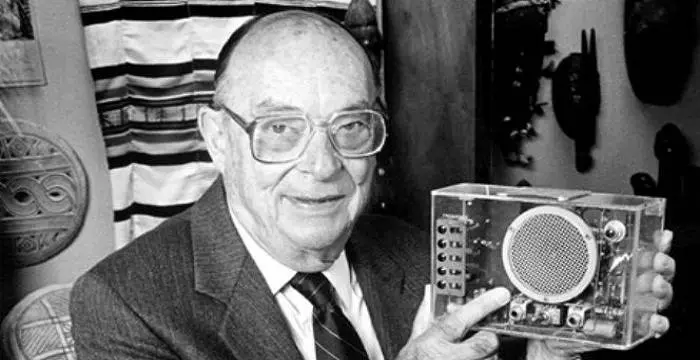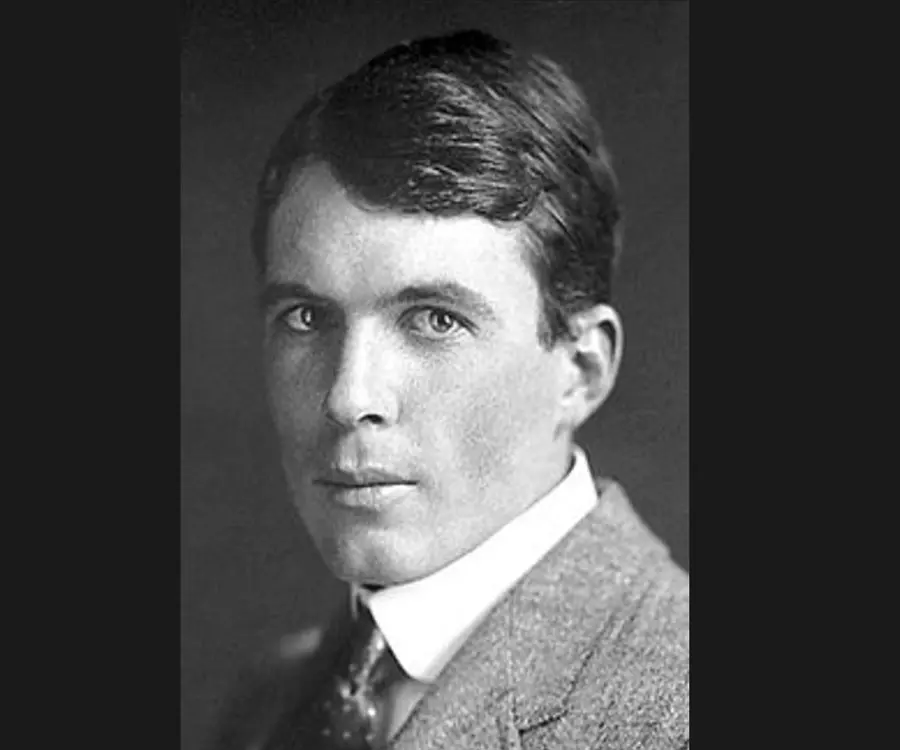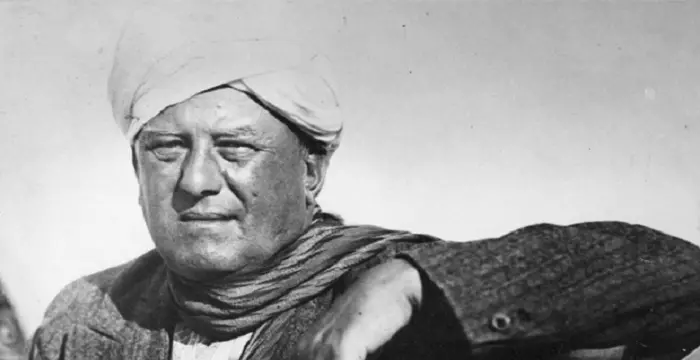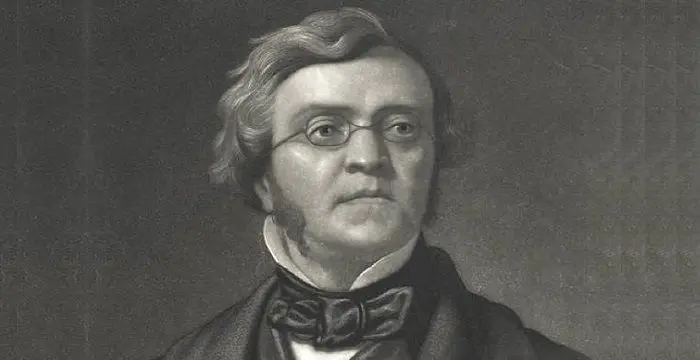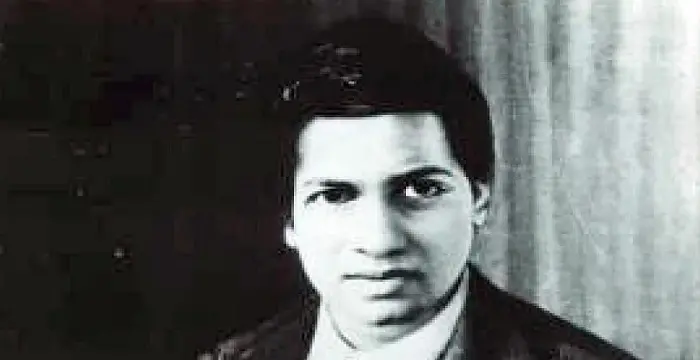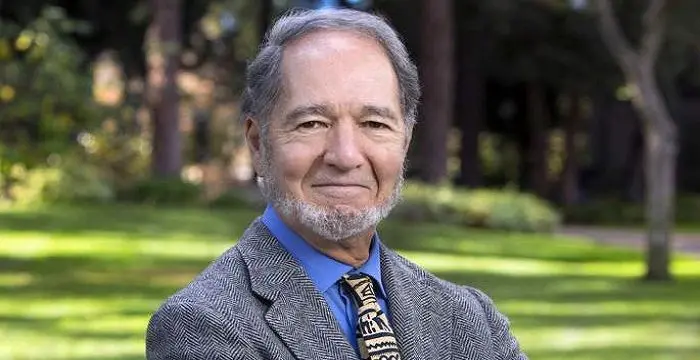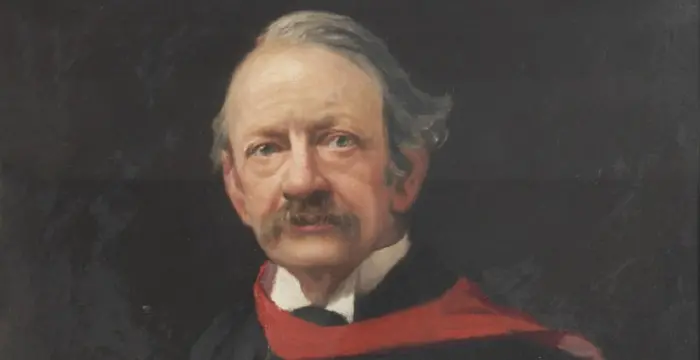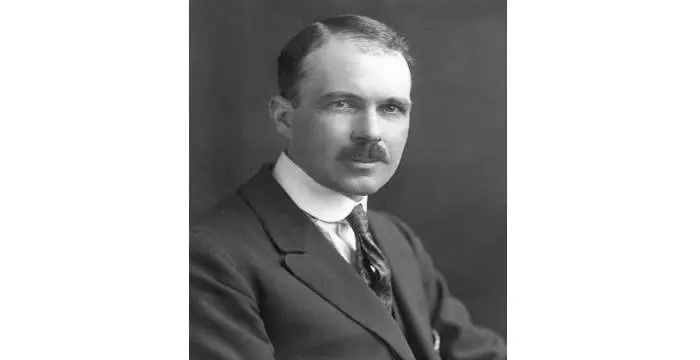
Sir William Lawrence Bragg - Nobel Laureate in Physics, Family and Life
Sir William Lawrence Bragg's Personal Details
William Lawrence Bragg was a British physicist and is the youngest ever Nobel Laureate in Physics so far
| Information | Detail |
|---|---|
| Birthday | March 31, 1890 |
| Died on | July 1, 1971 |
| Nationality | British |
| Famous | Trinity College, Cambridge, Scientists, Physicists, Nobel Laureate in Physics |
| Spouses | Alice Hopkinson |
| Childrens | David William, Margaret Alice, Patience Mary, Stephen Lawrence |
| Universities |
|
| Notable Alumnis |
|
| Birth Place | North Adelaide, South Australia |
| Gender | Male |
| Father | William Henry Bragg |
| Sun Sign | Aries |
| Born in | North Adelaide, South Australia |
| Famous as | Nobel Laureate in Physics |
| Died at Age | 81 |
// Famous Nobel Laureate in Physics
Wolfgang Pauli
Wolfgang Pauli was an Austrian-Swiss theoretical physicist, winner of Nobel Prize in Physics for his discovery of the ‘Exclusion Principle’. This biography of Wolfgang Pauli provides detailed information about his childhood, life, works & timeline.
Pierre Curie
Pierre Curie was a French physicist and Nobel laureate. This biography of Pierre Curie provides detailed information about his childhood, life, achievements, works & timeline.
John Bardeen
John Bardeen was an American physicist who won the Nobel Prize in Physics twice. This biography of John Bardeen provides detailed information about his childhood, life, achievements, works & timeline.
Sir William Lawrence Bragg's photo
Who is Sir William Lawrence Bragg?
William Lawrence Bragg was an Australian-British physicist, who won the Nobel Prize for Physics at the age of 25 and is the youngest ever Nobel Laureate in Physics so far. He and his father, William Henry Bragg, shared the ‘Nobel Prize for Physics’ awarded in 1915 for their work involving x-ray crystallography. Although he was a talented and able individual from an early age, it was assumed that his father had produced the bulk of the work and then generously shared the prize with his son for assisting him. But it was he who had the key idea and the skill to interpret the diffraction patterns to prove it and his father had contributed primarily developing instruments for the experiment. The effect of this slighting on him would shadow him for the rest of his life. He served for British army in both the World Wars and later became a popular lecturer known for his skill in making science exciting for the students. He enjoyed his job as a professor and most reports indicate he found happiness at the Royal Institute for perhaps the first time in his life. The foundation laid by his work and that of others in x-ray crystallography helped scientists to discover the structures of DNA and RNA, thereby creating the field of molecular biology.
// Famous Physicists
Henry Cavendish
Henry Cavendish was a theoretical chemist and physicist, renowned for discovery of hydrogen and calculation of the mass of earth. To know more about his childhood, profile, timeline and career read on
Walter Kohn
Nobel Laureate Walter Kohn was an Austrian-born American theoretical chemist and physicist. Check out this biography to know about his childhood, life, achievements, works & timeline.
Nikola Tesla
Nikola Tesla was a Serbian-American inventor, best known for his development of alternating current electrical systems. This biography of Nikola Tesla provides detailed information about his childhood, life, achievements, works & timeline.
Childhood & Early Life
He was born on March 31, 1890 in Adelaide, South Australia to Sir William Henry Bragg, a physicist, and his wife Lady Gwendoline Bragg. His father was a Professor of Mathematics and Physics at the University of Adelaide.
He was the eldest of the three children. He had a younger brother, Robert Charles Bragg, who was killed in 1915 at Gallipoli, and a younger sister, Gwendoline Bragg Caroe.
He had a keen interest in science and received his early education from the Queens Preparatory School, North Adelaide and St. Peter's College, Adelaide. He was a bright student and graduated from high school in 1904, at the age of 14.
Later he enrolled at the Adelaide University to study d mathematics, chemistry and physics. He graduated in 1908, at an age when most boys were still in secondary school.
In 1909, he attended the Trinity College, Cambridge, England and received a major scholarship in mathematics but after one year, he transferred to physics course, at the suggestion of his father. He continued his academic success by taking first class honors in Natural Science in 1912.
Career
In 1912, he was highly influenced by the ground-breaking work by a German physicist, Max Von Laue, on the diffraction of X- rays by crystals. He discussed it with his father and they started the research on X-ray crystallography, which ultimately resulted in the discovery of Bragg’s Law.
In 1914, he was elected to a Fellowship at Trinity College, but the First World War interrupted his work. From 1915 to 1919, in World War I, he served as technical adviser on sound ranging in the map section of British army headquarters in France.
After World War I, he served as the Langworthy Professor of Physics at Victoria University of Manchester, from 1919 to 1937, where he built his first research school, for the study of metals and alloys and silicates.
From 1937 to 1938, he served as the director of the National Physical Laboratory, but he left it to become a Cavendish Professor of Experimental Physics at Cambridge University. He served as the Administrator of Cavendish Laboratory at Cambridge University from 1938 to 1953.
In April 1953, he accepted the job of Resident Professor at the Royal Institution in London. He worked at the Royal Institution until his retirement in September 1966.
Major Works
His most significant accomplishment is the Bragg’s Law, which he discovered along with his father. Bragg's Law makes it possible to calculate the positions of the atoms within a crystal from the way an X-ray beam is diffracted by the crystal lattice.
In 1948, while in Cambridge, he became interested in the structure of proteins. Although he played no direct part in the 1953 discovery of DNA's structure, his X-ray method developed forty years ago was at the heart of this profound insight into the nature of life itself.
Awards & Achievements
In 1915, he was awarded the ‘Nobel Prize for Physics’ jointly with his father for their work in the analysis of crystal structure by means of X-rays, an important step in the development of X-ray crystallography. Until now, he is the youngest person ever to receive the Nobel Prize, at an age of 25.
He was honored as the ‘Knight of the British Empire’ by King George VI in the 1941 New Year Honours.
He received the ‘Royal Medal’ in 1946 and the ‘Copley Medal’ in 1966, both from the Royal Society.
Since 1992, the Australian Institute of Physics has awarded the Bragg Gold Medal for Excellence in Physics to commemorate him and his father, for the best doctorate thesis by a student at an Australian university.
Personal Life & Legacy
On 10 December 1921, he married Alice Grace Jenny Hopkinson who pursued a successful career in municipal affairs in Cambridge. They were blessed with four children; Stephen Lawrence, David William, Margaret Alice and Patience Mary.
He loved spending time reading literature and painting alongwith a lifelong interest in gardening. His other interest was shell collecting; his personal collection amounted to specimens from some 500 species; all personally collected from South Australia.
He died on July 1, 1971 at a hospital near his home at Waldringfield, Ipswich, Suffolk. He was buried in Trinity College Chapel, Cambridge University, England.
Trivia
When he was five, he fell from his tricycle and broke his arm. His father used the newly discovered X-rays to examine his arm. It was the first recorded surgical use of X-rays in Australia.
// Famous Scientists
Juliane Koepcke
Juliane Koepcke is a German-Peruvian biologist, who was the lone survivor among the 92 passengers and crew of the ill-fated LANSA Flight 508 that crashed in the Peruvian rainforest on 24 December 1971. Know more about her life in this biography.
Henry Cavendish
Henry Cavendish was a theoretical chemist and physicist, renowned for discovery of hydrogen and calculation of the mass of earth. To know more about his childhood, profile, timeline and career read on
Konstantin Tsiolkovsky
Konstantin Tsiolkovsky was a Russian rocket scientist and a pioneer of astronautics. This biography provides detailed information about his childhood, family, personal life, career, achievements, etc.
Sir William Lawrence Bragg's awards
| Year | Name | Award |
|---|---|---|
Other | ||
| 0 | Royal Medal (1946) | |
| 0 | Roebling Medal (1948) | |
| 0 | Copley Medal (1966) | |
| 0 | Nobel Prize in Physics (1915) | |
| 0 | Barnard Medal (1915) | |
| 0 | Hughes Medal (1931) | |
Sir William Lawrence Bragg biography timelines
- // 31st Mar 1890He was born on March 31, 1890 in Adelaide, South Australia to Sir William Henry Bragg, a physicist, and his wife Lady Gwendoline Bragg. His father was a Professor of Mathematics and Physics at the University of Adelaide.
- // 1904He had a keen interest in science and received his early education from the Queens Preparatory School, North Adelaide and St. Peter's College, Adelaide. He was a bright student and graduated from high school in 1904, at the age of 14.
- // 1908Later he enrolled at the Adelaide University to study d mathematics, chemistry and physics. He graduated in 1908, at an age when most boys were still in secondary school.
- // 1909In 1909, he attended the Trinity College, Cambridge, England and received a major scholarship in mathematics but after one year, he transferred to physics course, at the suggestion of his father. He continued his academic success by taking first class honors in Natural Science in 1912.
- // 1912In 1912, he was highly influenced by the ground-breaking work by a German physicist, Max Von Laue, on the diffraction of X- rays by crystals. He discussed it with his father and they started the research on X-ray crystallography, which ultimately resulted in the discovery of Bragg’s Law.
- // 1914 To 1919In 1914, he was elected to a Fellowship at Trinity College, but the First World War interrupted his work. From 1915 to 1919, in World War I, he served as technical adviser on sound ranging in the map section of British army headquarters in France.
- // 1915He was the eldest of the three children. He had a younger brother, Robert Charles Bragg, who was killed in 1915 at Gallipoli, and a younger sister, Gwendoline Bragg Caroe.
- // 1915In 1915, he was awarded the ‘Nobel Prize for Physics’ jointly with his father for their work in the analysis of crystal structure by means of X-rays, an important step in the development of X-ray crystallography. Until now, he is the youngest person ever to receive the Nobel Prize, at an age of 25.
- // 1919 To 1937After World War I, he served as the Langworthy Professor of Physics at Victoria University of Manchester, from 1919 to 1937, where he built his first research school, for the study of metals and alloys and silicates.
- // 1921On 10 December 1921, he married Alice Grace Jenny Hopkinson who pursued a successful career in municipal affairs in Cambridge. They were blessed with four children; Stephen Lawrence, David William, Margaret Alice and Patience Mary.
- // 1937 To 1953From 1937 to 1938, he served as the director of the National Physical Laboratory, but he left it to become a Cavendish Professor of Experimental Physics at Cambridge University. He served as the Administrator of Cavendish Laboratory at Cambridge University from 1938 to 1953.
- // 1941He was honored as the ‘Knight of the British Empire’ by King George VI in the 1941 New Year Honours.
- // 1946He received the ‘Royal Medal’ in 1946 and the ‘Copley Medal’ in 1966, both from the Royal Society.
- // 1948In 1948, while in Cambridge, he became interested in the structure of proteins. Although he played no direct part in the 1953 discovery of DNA's structure, his X-ray method developed forty years ago was at the heart of this profound insight into the nature of life itself.
- // 1953In April 1953, he accepted the job of Resident Professor at the Royal Institution in London. He worked at the Royal Institution until his retirement in September 1966.
- // 1st Jul 1971He died on July 1, 1971 at a hospital near his home at Waldringfield, Ipswich, Suffolk. He was buried in Trinity College Chapel, Cambridge University, England.
// Famous Trinity College, Cambridge
Isaac Newton
Isaac Newton was an English scientist and mathematician, who discovered gravitation and Newtonian Mechanics. Read this biography to find more on his life.
Aleister Crowley
Aleister Crowley was an occultist and ceremonial magician who founded the ethical philosophy of Thelema. This biography of Aleister Crowley provides detailed information about his childhood, life, achievements, works & timeline.
William Makepeace Thackeray
William Thackeray was an English novelist and satirist. Read this brief biography to find more on his life & timeline.
Srinivasa Ramanujan
Srinivasa Ramanujan was an Indian mathematician who made significant contributions to mathematical analysis, number theory, and continued fractions. Check out this biography to know about his childhood, life, achievements, works & timeline. .
Jared Diamond
Jared Mason Diamond is an American scientist and author reputed for his highly acclaimed and popular science books.
J. J. Thomson
J.J. Thomson was an English physicist and mathematician. This biography profiles his childhood, life, academic career, research and timeline.
Sir William Lawrence Bragg's FAQ
What is Sir William Lawrence Bragg birthday?
Sir William Lawrence Bragg was born at 1890-03-31
When was Sir William Lawrence Bragg died?
Sir William Lawrence Bragg was died at 1971-07-01
Where was Sir William Lawrence Bragg died?
Sir William Lawrence Bragg was died in Waldringfield, Ipswich, Suffolk, England
Which age was Sir William Lawrence Bragg died?
Sir William Lawrence Bragg was died at age 81
Where is Sir William Lawrence Bragg's birth place?
Sir William Lawrence Bragg was born in North Adelaide, South Australia
What is Sir William Lawrence Bragg nationalities?
Sir William Lawrence Bragg's nationalities is British
Who is Sir William Lawrence Bragg spouses?
Sir William Lawrence Bragg's spouses is Alice Hopkinson
Who is Sir William Lawrence Bragg childrens?
Sir William Lawrence Bragg's childrens is David William, Margaret Alice, Patience Mary, Stephen Lawrence
What was Sir William Lawrence Bragg universities?
Sir William Lawrence Bragg studied at Trinity College, Cambridge, University of Adelaide, Trinity College, Cambridge, St Peter's College, Adelaide, University of Cambridge
What was Sir William Lawrence Bragg notable alumnis?
Sir William Lawrence Bragg's notable alumnis is Trinity College, Cambridge
Who is Sir William Lawrence Bragg's father?
Sir William Lawrence Bragg's father is William Henry Bragg
What is Sir William Lawrence Bragg's sun sign?
Sir William Lawrence Bragg is Aries
How famous is Sir William Lawrence Bragg?
Sir William Lawrence Bragg is famouse as Nobel Laureate in Physics
